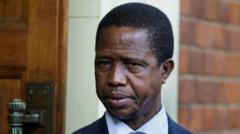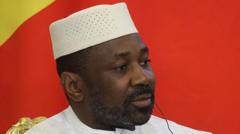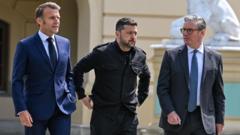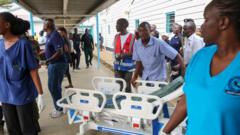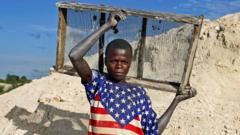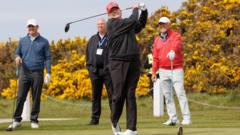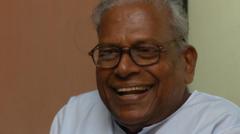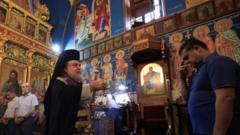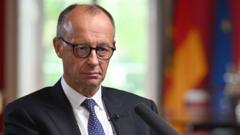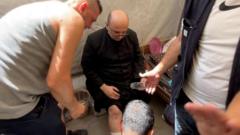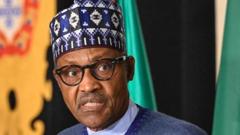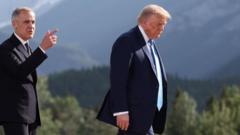In a remarkable display of global unity amidst geopolitical tensions, Pope Francis' funeral drew an immense crowd and world leaders to celebrate the pontiff's legacy dedicated to inclusivity and care for the marginalized.
Pope Francis' Funeral: A Farewell to the People's Pope

Pope Francis' Funeral: A Farewell to the People's Pope
As Pope Francis is laid to rest, the world reflects on the legacy of the first Jesuit and Latin American pontiff.
April 26, 2025, marked a historic farewell for Pope Francis as his funeral took place in the iconic St. Peter's Square of Vatican City. The gathering of tens of thousands included royal figures, heads of state, and ordinary faithful, all paying their final respects to a pontiff revered for his efforts to foster inclusivity within the Roman Catholic Church. The funeral service, conducted as a simplified ceremony strikingly different from the grandeur of past papal funerals, still retained traditional elements with an audience of notable world leaders, red-robed cardinals, and solemn Gregorian chants.
Pope Francis, known for his humility, passed away at the age of 88 earlier that week. He had personally streamlined the funeral preparations to reflect his vision of the papacy focused more on service than stature, instructing to limit the ceremony's opulence. His burial will take place in St. Mary Major, a papal basilica he cherished, attended by a diverse crowd, including marginalized communities he championed during his tenure.
As global leaders congregated, security around the Vatican was notably heightened, with over 100,000 expected attendees necessitating tight control measures and emergency personnel on standby. Notable invitees included President Trump and President Biden, alongside international figures from rival nations, which added layers of complexity to the seating arrangements. Yet, in a nod to equal treatment, officials planned the placements based on an alphabetical order system from each delegate's country in French, promoting a sense of unity amidst diversity.
As Pope Francis’ sent-off commenced, crowds arrived bearing flags from across the globe, embodying the universal reach of his mission. The event resonated deeply within the church's continued reflection on his encounter with suffering, migration, and environmental issues during a time of unrest. Throughout the upcoming days, memorial masses will be held globally as the world transitions into a new chapter, looking toward the future leadership of the Catholic Church as cardinals begin to deliberate on his successor.
Pope Francis, known for his humility, passed away at the age of 88 earlier that week. He had personally streamlined the funeral preparations to reflect his vision of the papacy focused more on service than stature, instructing to limit the ceremony's opulence. His burial will take place in St. Mary Major, a papal basilica he cherished, attended by a diverse crowd, including marginalized communities he championed during his tenure.
As global leaders congregated, security around the Vatican was notably heightened, with over 100,000 expected attendees necessitating tight control measures and emergency personnel on standby. Notable invitees included President Trump and President Biden, alongside international figures from rival nations, which added layers of complexity to the seating arrangements. Yet, in a nod to equal treatment, officials planned the placements based on an alphabetical order system from each delegate's country in French, promoting a sense of unity amidst diversity.
As Pope Francis’ sent-off commenced, crowds arrived bearing flags from across the globe, embodying the universal reach of his mission. The event resonated deeply within the church's continued reflection on his encounter with suffering, migration, and environmental issues during a time of unrest. Throughout the upcoming days, memorial masses will be held globally as the world transitions into a new chapter, looking toward the future leadership of the Catholic Church as cardinals begin to deliberate on his successor.

